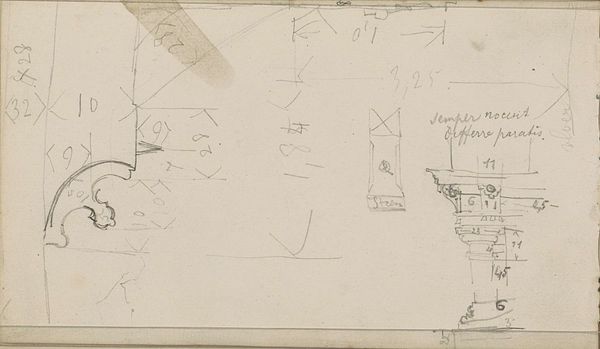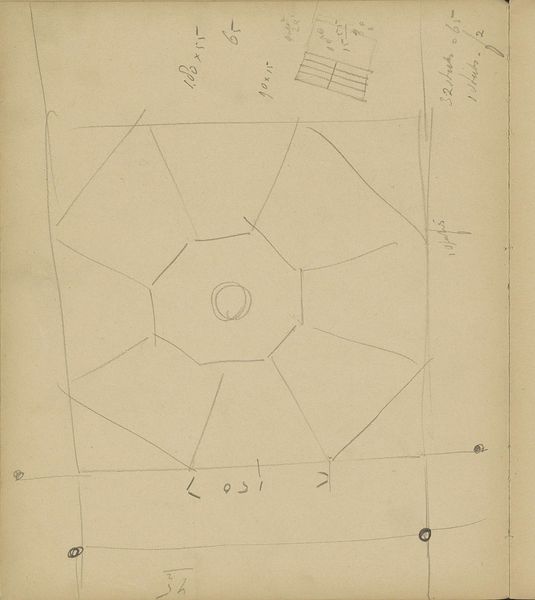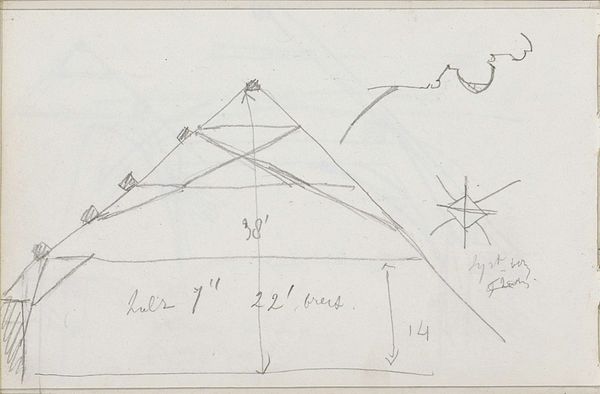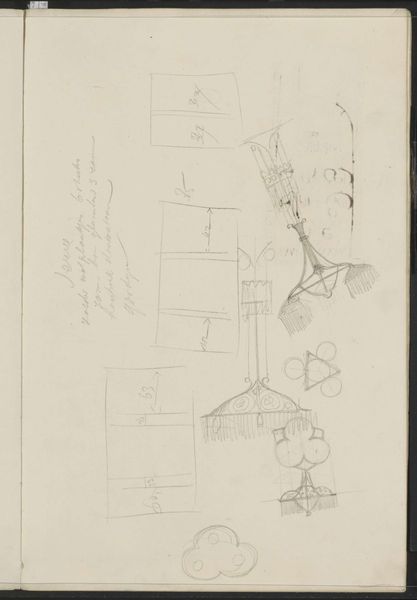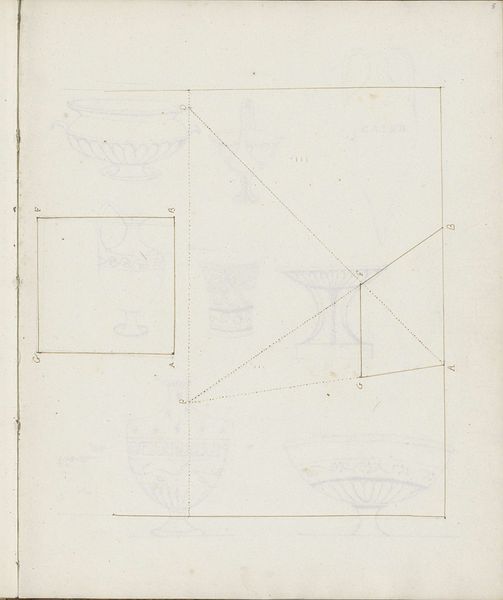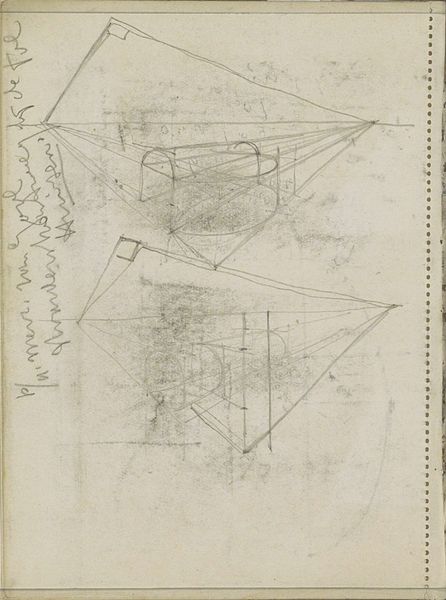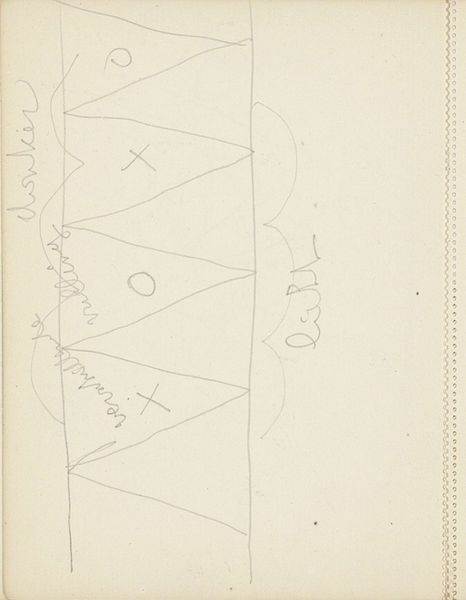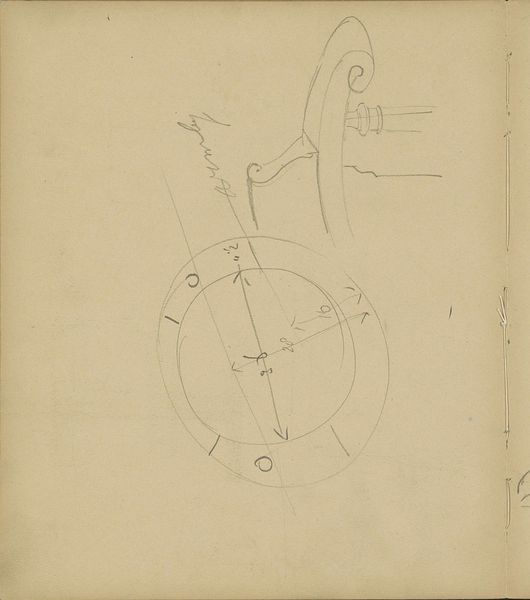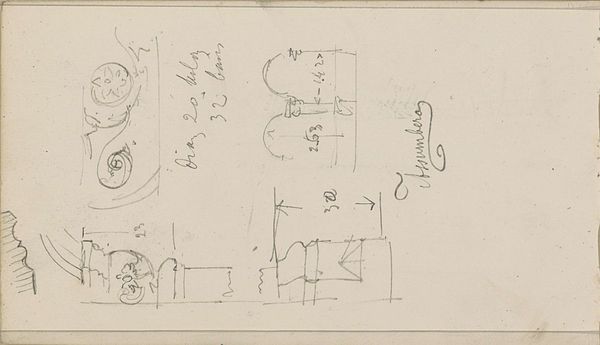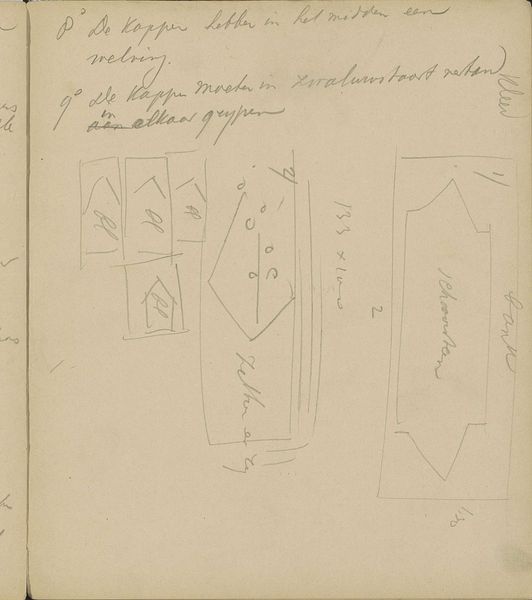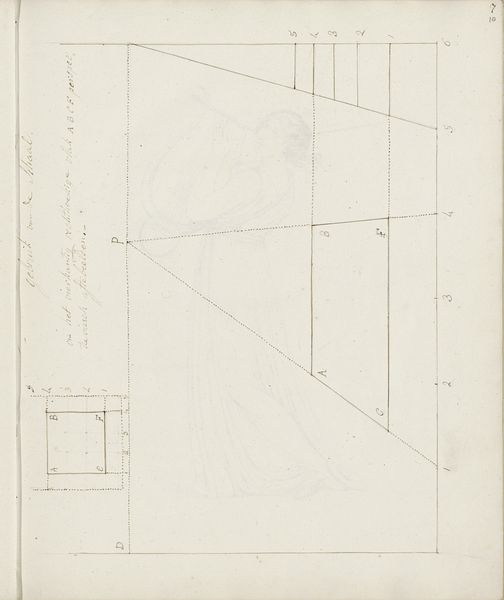
drawing, paper, pencil, architecture
#
drawing
#
amateur sketch
#
incomplete sketchy
#
hand drawn type
#
paper
#
personal sketchbook
#
idea generation sketch
#
sketchwork
#
geometric
#
pencil
#
sketchbook drawing
#
storyboard and sketchbook work
#
academic-art
#
sketchbook art
#
architecture
#
initial sketch
Copyright: Rijks Museum: Open Domain
Curator: This unassuming pencil drawing, aptly titled "Architectuurstudie" or "Architectural Study", was created by Isaac Gosschalk sometime between 1866 and 1868. It's a preparatory sketch on paper, nothing grand in scale, but holding perhaps more than initially meets the eye. Editor: It does have a humble, almost secretive air about it. I'm drawn to the geometry, the faint lines suggesting unrealized structures. It feels more like a whisper of an idea than a concrete proposal. What strikes me is the interplay between the technical drawing and handwritten annotations – are those calculations? Curator: Precisely. Gosschalk was deeply engaged in the 19th-century project of urban renewal and historic preservation. The architectural forms visible reflect not only the academic aesthetic that prevailed at the time, but perhaps are calculations of restoring a space with this knowledge. The "Academic Art" styling is quite visible with its attention to realistic depiction and details in replicating earlier historical architecture.. Editor: I notice these circular arches on the right of the sketch that don’t have any clear building to belong to – their rounded structure and somewhat medieval character suggests to me images of safe-keeping, promises of unity. The written additions imply this image to be reminiscent of architecture present in 1615, more than 200 years before this drawing was created. Curator: Intriguing observation! It certainly speaks to a dialogue between epochs that's central to how societies define themselves through its monumental structures. As public taste for the Neogothic style flourished throughout the 19th century, many monuments in this image become a symbol of historical self. Editor: This academic leaning also appears on the more geometric structure to the left - there are staircases leading nowhere! The composition’s overall asymmetry also lends to my interest; despite being labeled as architecture study this artwork lacks an intention to bring the sketches together to create any functional blueprint. Curator: The unfinished state and fragmented imagery perhaps speak to a broader debate happening around the societal responsibility to integrate history into urban growth, rather than simply overwriting the old with the new. He leaves behind what you mentioned: asymmetry with each independent architectural figure being a stand alone work rather than existing as one functional construction. Editor: It shows how much emotional resonance older landmarks hold – their forms evoking collective ideals of safety and togetherness—Gosschalk reveals how even a rudimentary drawing is potent for symbolic inquiry into what historical structures bring for their people. Curator: Indeed. "Architectuurstudie," though unassuming in its medium and style, is valuable to the urban politics that underpin aesthetic expression and historic preservation.
Comments
No comments
Be the first to comment and join the conversation on the ultimate creative platform.
